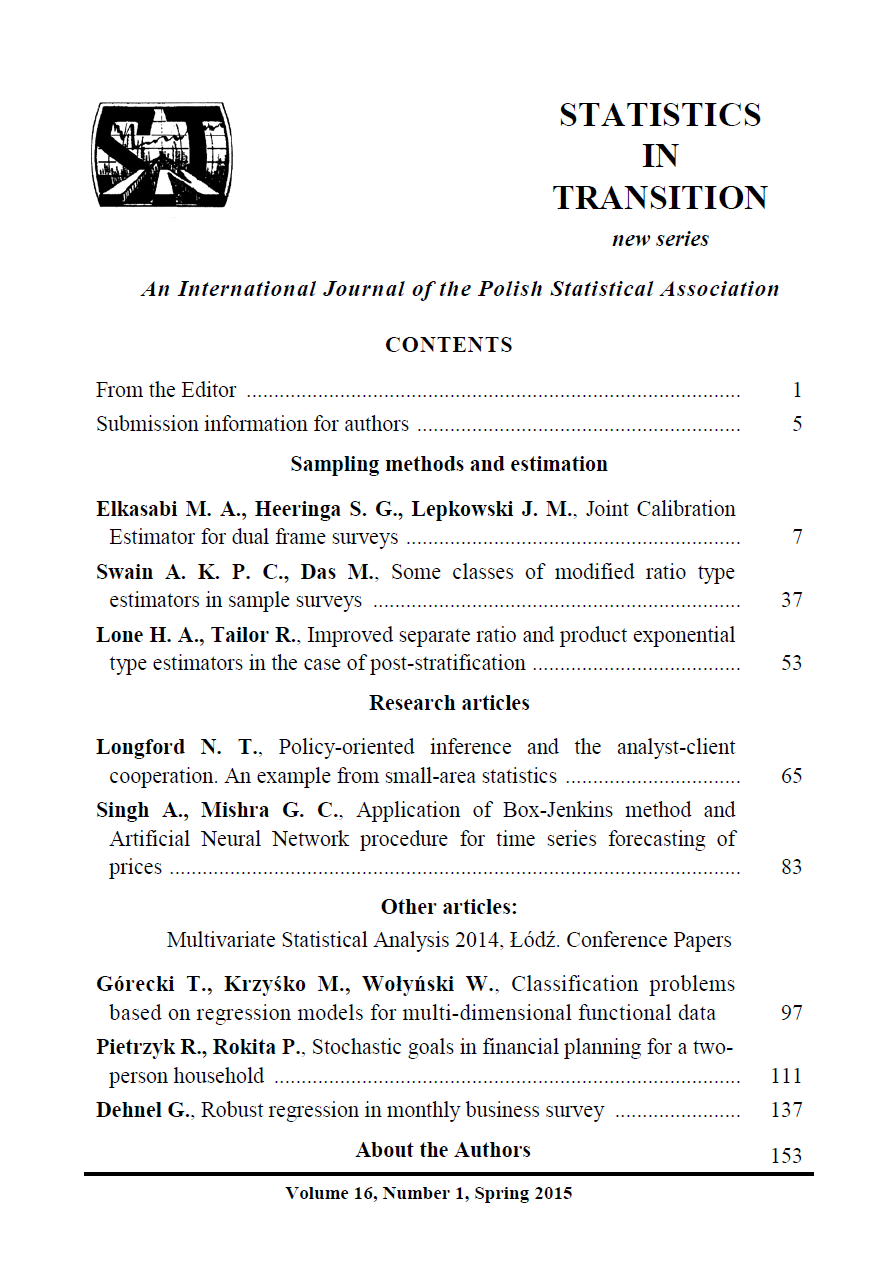ARTICLE
ABSTRACT
We show on an application to small-area statistics that efficient estimation is not always conducive to good policy decisions because the established inferential procedures have no capacity to incorporate the priorities and preferences of the policy makers and the related consequences of incorrect decisions. A method that addresses these deficiencies is described. We argue that elicitation of the perspectives of the client (sponsor) and their quantification are essential elements of the analysis because different estimators (decisions) are appropriate for different perspectives. An example of planning an intervention in a developing country’s districts with high rate of illiteracy is described. The example exposes the deficiencies of the general concept of efficiency and shows that the criterion for the quality of an estimator has to be formulated specifically for the problem at hand. In the problem, the established small-area estimators perform poorly because the minimum mean squared error is an inappropriate criterion.
KEYWORDS
composition, empirical Bayes, expected loss, borrowing strength, exploiting similarity, shrinkage, small-area estimation.
REFERENCES
CARLIN, B. P., LOUIS, T. A. (2009). Bayes and Empirical Bayes Methods for Data Analysis, 3rd ed., Boca Raton, FL: Chapman and Hall/CRC.
DEGROOT, M. H. (2004). Optimal Statistical Decisions, New York: McGraw Hill.
ELBERS, C., LANJOUW, J. O., LANJOUW, P. (2003). Micro-level estimation of poverty and inequality. Econometrica, 71, 355–364.
GARTHWAITE, P. H., KADANE, J. B., O’HAGAN, A. (2005). Statistical meth ods for eliciting probability distributions. Journal of the American Statistical Association, 100, 680–701.
GOLDSTEIN, H. (2002). Multilevel Statistical Models, 3rd ed., London: E. Arnold.
LINDLEY, D. V. (1985). Making Decisions, Chichester, UK: Wiley.
LONGFORD, N. T. (1999). Multivariate shrinkage estimation of small-area means and proportions. Journal of the Royal Statistical Society Series A, 162, 227–245.
LONGFORD, N. T. (2005). Missing Data and Small-Area Estimation, New York:Springer-Verlag.
LONGFORD, N. T. (2007). On standard errors of model-based small-area estima tors. Survey Methodology, 33, 69–79.
LONGFORD, N. T. (2013). Statistical Decision Theory, New York: Springer Verlag.
LONGFORD, N. T. (2015). Policy-related small-area estimation. South African Journal of Statistics 49, 105–119. Also available as Working Paper 1427,Departament d’Economia i Empresa, Universitat Pompeu Fabra, Barcelona,Spain, http://www.econ.upf.edu/en/research/onepaper.php?id=1427.
R CORE DEVELOPMENT TEAM (2012). R: A language for statistical comput ing and graphics, Vienna, Austria: Foundation for Statistical Computing.
RAO, J. N. K. (2003). Small Area Estimation, New York: Wiley.
ROBBINS, H. (1995). An empirical Bayes approach to statistics. Proceedings of the 3rd Berkeley Symposium on Mathematical Statistics and Probability, Vol.I, pp. 157–164.
SÄRNDAL, C.-E., SWENSSON, B., WRETMAN, J. (1992). Model Assisted Sur vey Sampling, New York: Springer-Verlag.
SHEN, W., and LOUIS, T. A. (1998). Triple-goal estimates in two-stage hierarchi cal models. Journal of the Royal Statistical Society Series B, 60, 455–4
